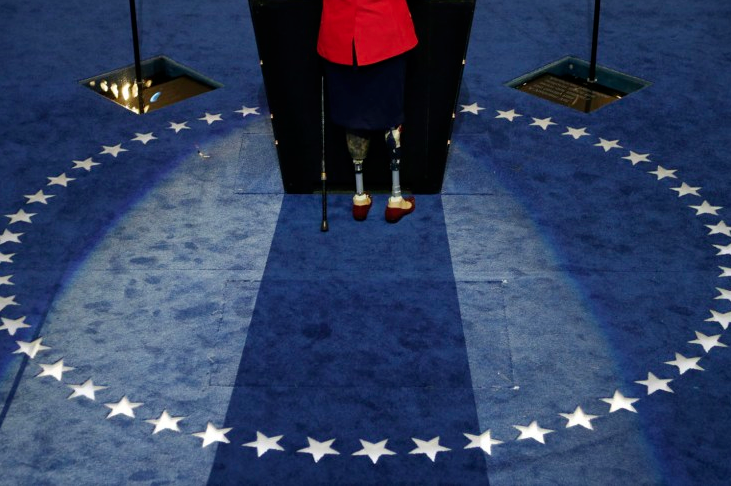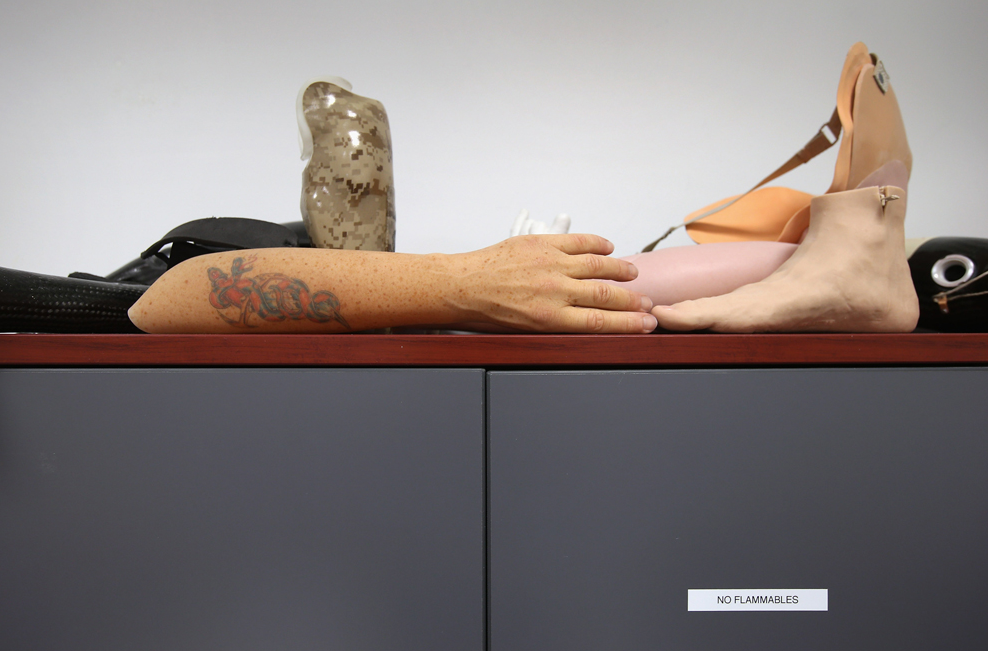The photograph above is of Tammy Duckworth, a candidate for U.S. Congress in Illinois’ Eighth District, speaking at the Democratic National Convention this past week. She is also a war hero, having been among the first women to fly combat missions in Iraq, losing both of her legs when a grenade landed in her lap while piloting a Blackhawk helicopter north of Baghdad. Her opponent for Congress, the incumbent Republican Joe Walsh has accused her of not being a “true hero” because she makes a point of discussing her military service in her campaign. To quote former President Clinton in a different context, “that takes some brass,” especially coming from someone who has never served a day in the military in his life. But the photograph above is not about Congressman Walsh’s Neanderthal attitudes nor even about Tammy Duckworth’s heroic service and sacrifice to her nation—or at least not explicitly so.
Shot from behind the podium and at a high angle that crops her body at the waist and accents her prosthetic legs, the photograph emphasizes what the viewing audience could not see—at least not while she was speaking. Viewed from the front we see a face, the marker of the liberal individual, a person. And any person who can make their way onto the national stage to address a live audience of thousands and a mass mediated audience of millions can’t be doing all that bad.
Viewed from the back, however, the photograph invites a different story. It reminds us of the terrible price that this individual paid—and now note that she is anonymous, faceless, another casualty of war but not one that we have to address directly. In short, the photograph is an aide memoire to what we desperately don’t want to see, to what we want actively to forget: that we sent her into battle and the price she paid is really our debt, but it is a debt we have no way of paying.
In a sense, the photograph is a comment on the hundreds of images we see of the more than 1,200 veterans who have lost limbs in the Iraq and Afghanistan wars and yet, through the wonders of modern medical technology (ironically made possible because of advances in “war medicine”), survived to live what appear to be so-called “normal” lives. And indeed, it is the emphasis on appearance that is very much to the point, for in the end we rarely learn very much about the ordinary lives that such people live and pain, trauma, and hardships that they face.
Consider, for example, this photograph that appeared recently in a slide show dedicated to the recovery of war veterans at Brooke Army Medical Center.
What you are looking at here are not real arms and legs, but rather “life-like covers” designed to slip over prosthetic limbs so as to masquerade a disability and to hide it from public view. Note in particular the customized tattoos on the arm that make it appear to be individual and personal. There is every reason to believe that an amputee would want to be “seen” as normal, to hide his or her stigma, and thus to mask their prosthesis with a “life-like cover.” Or rather there is every reason to believe that this is how someone who does not share such a disability—a so called “normal” person—might imagine how an amputee would want to cover-up his or her “shame.” But really, the shame is ours and such “life-like covers” function, at least on par, as a veil that makes it easier for us to forget or to ignore our complicity with the sacrifice such men and women have made and the real debts that have to be paid.
Photo Credit: Charlie Neibergall/AP; John Moore/Getty Images


Ben Battle was a soldier bold,
And used to war’s alarms;
But a cannon-ball took off his legs,
So he laid down his arms!